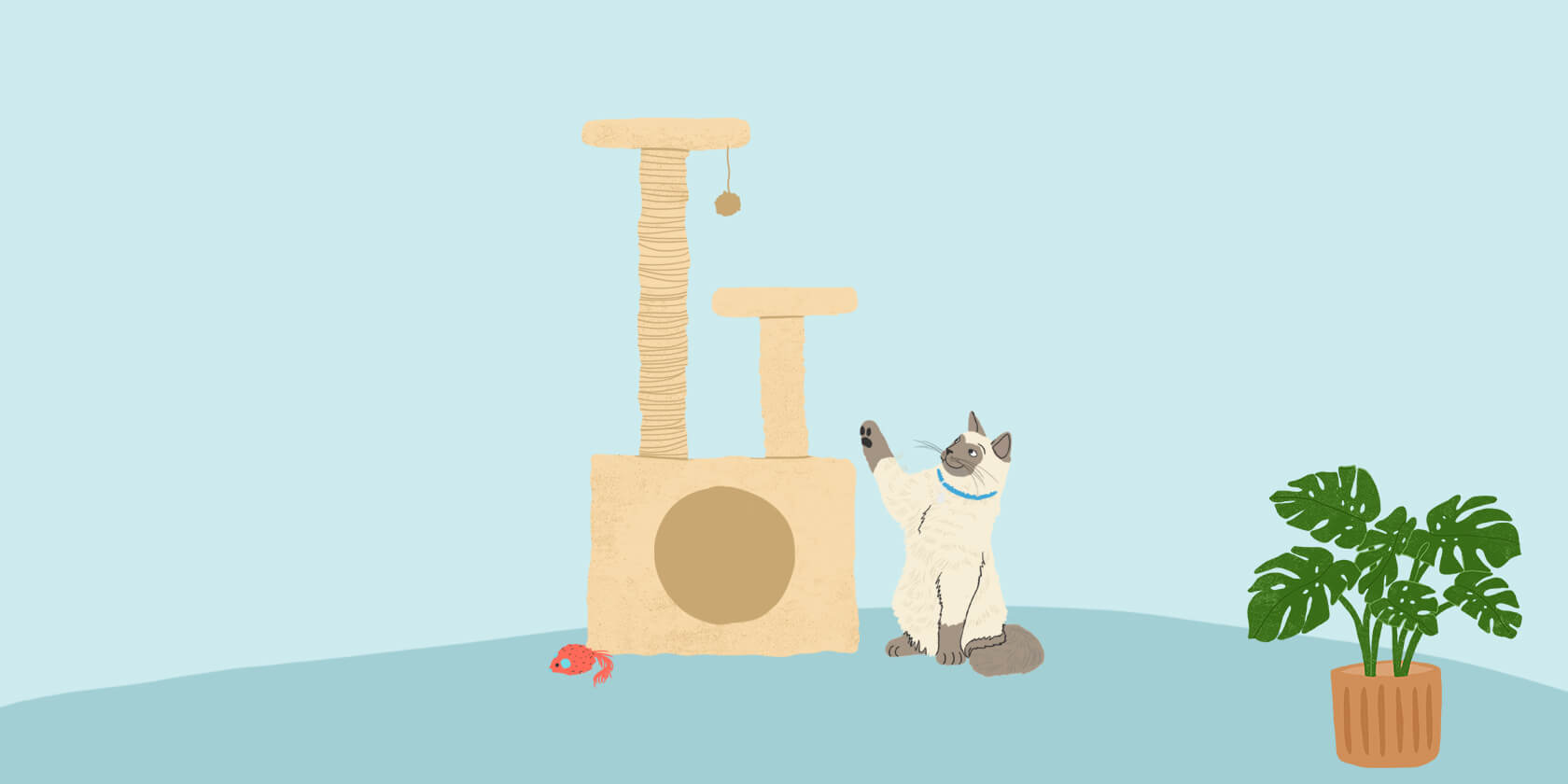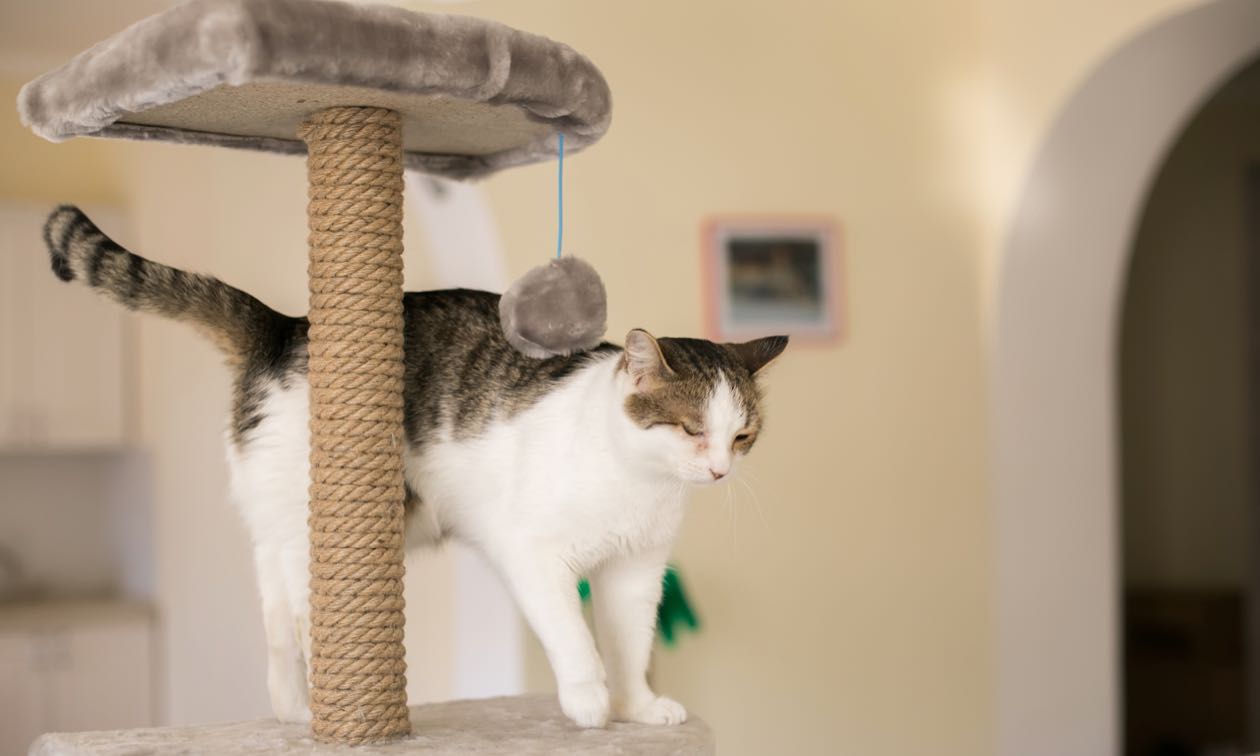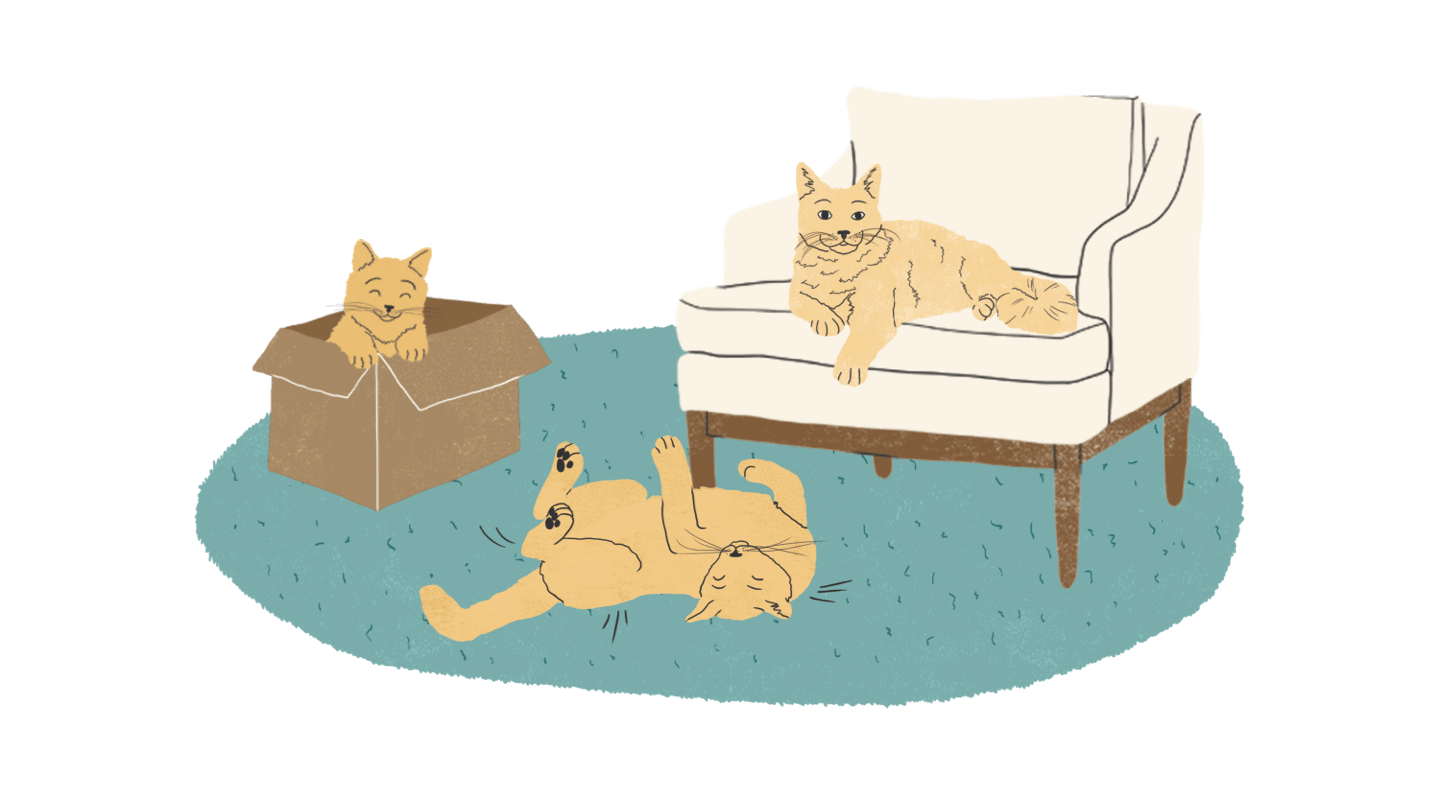Cat trees, scratchers, towers, perches — they go by many names (and they serve many functions). Admittedly, cat trees aren’t always the prettiest cat accessory. They can be costly and take up a lot of room. Are they worth the expense and space? In most cases, the answer is a resounding “yes!”
Why Cats Need Indoor Cat Trees or Towers
Our domestic house cats still have many of their wild cat needs and instincts. Believe it or not, a simple cat tree can give them appropriate ways to meet a number of those needs. In fact, cat trees can even help with unwanted behaviors like scratching furniture and inter-cat aggression.

Nail Care
Most cat trees are designed with scratching in mind. It’s a great way to help keep nail growth under control. Cats tend to want a good scratching session when they wake up from a nap, so having a cat tree near a favorite sleeping spot is smart.
Stretching
Another thing cats like to do when they wake up is have a nice stretch. A tall, sturdy cat tree is perfect for a long morning stretch!
Spreading Their Scent
Cat trees and other scratching surfaces are particularly helpful when you have cats who aren’t getting along, or you’re dealing with spraying around the home. That’s because scratching isn’t just about nail care — it’s also a way cats spread their scent, which is an important communication tool. Cats use scent to share all kinds of information with each other, including where they like to spend their time and how recently they were there. This allows them to time-share different areas of your home and avoid conflict.
It’s also soothing for a cat to be surrounded by their own scent. You may see your cat scratch more during times of stress. Spraying is another way they spread their scent throughout the home. Cat trees mean more opportunities to scratch and rub, which is an appropriate way of accomplishing the same task.
Vertical Space
For most cats, being up high provides a sense of security. It gives them a better vantage point to see what’s going on and watch for predators. In our homes, your cat may see “predators” in the form of other cats they aren’t getting along with, dogs, visitors, and even children. Giving your cat ways to get up above the action will help them feel less fearful and may even make them less likely to run and hide.
Tall cat towers and trees also give cats ways to put distance between each other, which is a way they avoid conflict. If there’s aggression or they just need a little space, they can use the cat towers.
In a small home, adding vertical space greatly increases your cat’s livable area. A few cat trees may take up room on your floor. But your cat suddenly has new levels they can access in different areas.
Hiding Spots
Many indoor cat trees come with cubby holes or deep beds. These are perfect hiding spots, giving cats a sense of security. Even if they don’t use those hiding spots very often, it’s still a stress-reducer knowing they’re available if needed.
Resting and Sleeping Spots
It may seem strange since a cat can technically sleep anywhere. But safe resting and sleeping spots are actually considered key resources for your cat. And cat trees usually offer a few different options for a lazy time that can help your cat feel secure.
What to Look for In an Indoor Cat Tree
When you’re shopping for a cat tree or cat tower, think about:
- Location
How much room do you have (on the floor and vertically)? Is there a spot near a window that will give them a great view? - Material
Does your cat prefer to scratch carpet, sisal rope or fabric, cardboard, etc.? - Levels
Can your cat easily move from one level to the next (particularly if they have mobility issues)? - Resting preferences
Does your cat like enclosed hiding spots, deep beds with lots of cushion, or shallow perches? - Stability
Will this cat tree stand up to an intense scratching and stretching session, or will it topple over? - Size
Is it tall enough that your cat can get a good stretch? - Space
Is there room for more than one cat, with a little distance between them? - Design
Can you tolerate looking at it every day for many years?
What If You Don’t Have Room for An Indoor Cat Tree?
Some spaces are just too small for a traditional cat tree, but that doesn’t mean your cats are out of luck. There are some new designs on the market with a smaller footprint. You can even get a pole-style tree that’s essentially a single pole that goes floor to ceiling with a few small landings. If you just can’t make it work, consider alternatives to meet those same needs for your cat.
Small, horizontal floor scratchers are great for nail care and scent spreading. You can also find flat scratching panels that attach to the wall or small angled carpeted scratchers. You can even hang a piece of carpet or a sisal doormat on the wall for your cat to scratch.
Cat shelves and catwalks are perfect if you have wall space but can’t give up any floor space.
You can buy or make beds and hiding spots and place them on the floor or up on existing furniture pieces for some height. Just make sure the furniture is secured, and you remove any items your cat could knock off and break or injure themselves on.
ZPC-01963R1



